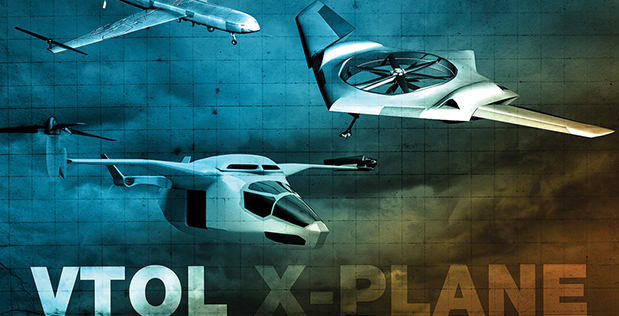
Summary
For the past 60 years, helicopters have provided essential vertical takeoff and landing (VTOL) capabilities–omnidirectional maneuverability, hovering, landing on almost any flat surface–for countless military operations. Even as VTOL aircraft technology continues to advance, however, one key goal still remains elusive: improving top speed beyond 150 kt-170 kt. Faster VTOL aircraft could shorten mission times and increase the potential for successful operations, while reducing vulnerability to enemy attack. Unfortunately, new VTOL designs so far have been unable to increase top speed without unacceptable compromises in range, efficiency, useful payload or simplicity of design.
DARPA’s VTOL experimental plane, or VTOL X-Plane, program seeks to overcome these challenges through innovative cross-pollination between the fixed-wing and rotary-wing worlds, with the goal of fostering radical improvements in VTOL flight. Rather than tweaking past designs and technologies, VTOL X-Plane challenges industry and innovative engineers to create a single hybrid aircraft that would concurrently push the envelope in four areas:
- Speed: Achieve a top sustained flight speed of 300 kt-400 kt
- Hover efficiency: Raise hover efficiency from 60 percent to at least 75 percent
- Cruise efficiency: Present a more favorable cruise lift-to-drag ratio of at least 10, up from 5-6
- Useful load capacity: Maintain the ability to perform useful work by carrying a useful load of at least 40 percent of the vehicle’s projected gross weight of 10,000-12,000 pounds
This program is now complete
This content is available for reference purposes. This page is no longer maintained.
